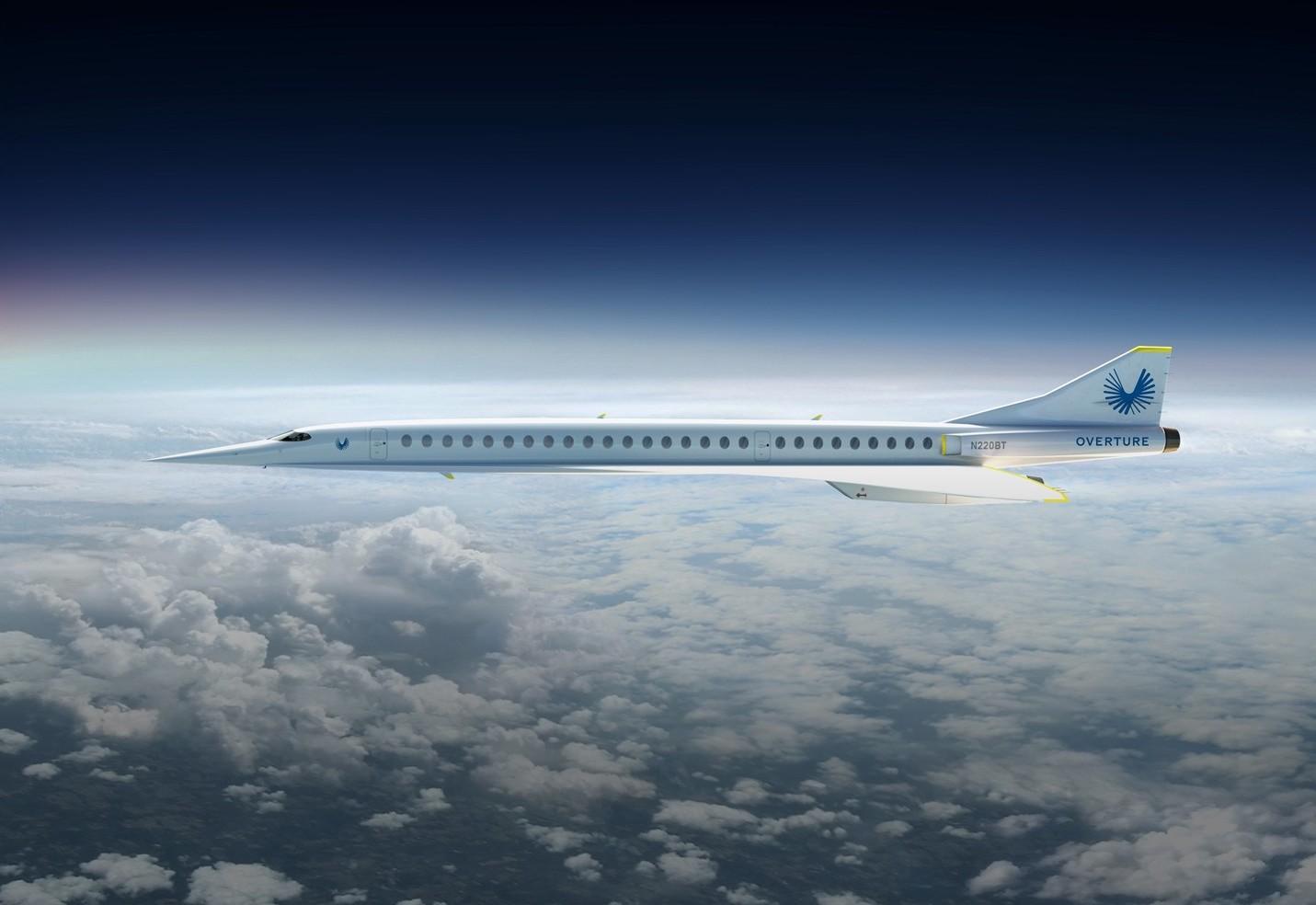
High-speed airliner developer Boom Supersonic and engine-maker Rolls-Royce have agreed to study propulsion system concepts for the Colorado-based company’s proposed Mach 2.2 Overture aircraft design.
The agreement comes after five years of behind-the-scenes discussions between the two companies and could pave the way for a follow-on engine selection for the Overture, a 75-seat airliner which Boom aims to debut into commercial service later this decade.
The Boom project represents a possible return to high-speed commercial flight for Rolls which, together with Safran (formerly Snecma), developed the Olympus 593 engine in the 1960s for the long-serving Anglo-French Concorde supersonic airliner.
“I feel like the most significantly legitimate criticism of Boom over the years has been that we don’t have an engine partner yet, and now clearly we do,” Boom CEO and founder Blake Scholl said. The agreement “has been a long time coming,” and “is the missing puzzle piece for Overture,” he added.
“Having worked with Rolls behind the scenes for literally years, we are now sufficiently comfortable with the technology viability of being able to match a Rolls engine with our Overture airframe—and do so in such a way that’s feasible; that’s going to meet our noise requirements and with a business case that’s viable. All that’s got us to the point where we’re now able to talk about this more openly,” Scholl said.
The agreement is “the formalization of a design study and a process to down-select from various options in the Rolls portfolio,” he added. “We expect this will lead to a formal launch of an engine program in approximately 2022 should things continue the way they are.” However, he cautioned that the arrangement with Rolls is not exclusive.
“We haven’t yet made that final downselect for a single partner, though we think Rolls has great technology for this. We appreciate that they have a very strong corporate commitment to sustainability, and we feel very aligned with them on that. But there are there are still other options out there.” Boom has also discussed potential study plans with Pratt & Whitney and General Electric, the latter now developing the Affinity engine to power the Mach 1.4 Aerion Supersonic AS2 business jet.
Rolls director of strategy Simon Carlisle said “we share a strong interest in supersonic flight and in sustainability strategies for aviation with Boom. We’re now building on our valuable experience in this space as well as our previous work together to further match and refine our engine technology for Boom’s Overture.”
Although details of the work remain undisclosed, Rolls said the study “will focus heavily on how we can make supersonic flight compatible with our (and the aviation industry’s) climate targets. We see great value in exploring the use of sustainable fuels in supersonic flight, so that will be an important part.”
The company confirmed that a derivative engine based on the high-pressure ratio core of the Trent family is among potential options. “We’re hoping to make significant progress on the first phase of work by the end of this year,” Rolls said.
In 2017, Rolls-Royce disclosed it was also considering supersonic power options based on potential future developments of its two-spool Advance2, the core of which forms the heart of the Pearl 700 engine selected in 2019 for the Gulfstream G700 business jet. However, despite the smaller size and weight of Boom’s trijet design compared to the Concorde, it remains unclear if the business jet-sized Advance2 architecture could meet the Overture’s thrust requirements for take-off, climb and sustained Mach 2.2 flight without afterburner—or supercruise.
Although not discussing specifics in terms of power or specific bypass ratio, Scholl said Boom is “looking for a medium-bypass turbofan. And the three key criteria for it are fuel efficiency, sustainability and a path to industrialization—so we think there are multiple good options there. But there are a lot of different ways you get from point A to B, which trade between those things.”
He explained that the overall propulsion system design will be driven by a balance of two main performance parameters. “One is the landing/takeoff noise cycle, and we expect to meet the latest Stage 5/Chapter 14 noise levels on the ground with the aircraft flying an optimized flight path. That requirement balances with cruise efficiency,” Scholl said. “The way to make the aircraft quiet around the ground is to make the fan really big and go to a big bypass ratio. Of course, really large fans are not super-efficient at super cruise, so you need to pick the right intermediate bypass ratio and then incorporate other noise technologies.”
For the study, Rolls is expected to review design archives of the production Concorde’s Olympus 593 Mk 610 version which employed variable geometry inlet ramps, variable nozzles and secondary air doors to supercruise efficiently at Mach 2. The high inlet recovery pressure generated 63% of the net thrust at cruise and enabled the afterburner to be turned off at Mach 1.7. For lower community noise, Rolls is also studying options such as variable inlets and nozzles to enable the engine to be reconfigured for low-speed, subsonic operation and high-speed cruise.
However, in keeping with Boom’s overall philosophy of relying on advanced but proven technology, Scholl said the propulsion system will be low risk. “Will there be innovation throughout the propulsion system? Absolutely. We could have things like a distortion tolerant fan; an innovative exhaust system and a high efficiency intake. But things like variable cycle that is not yet proven technology would be for future aircraft,” he added.





